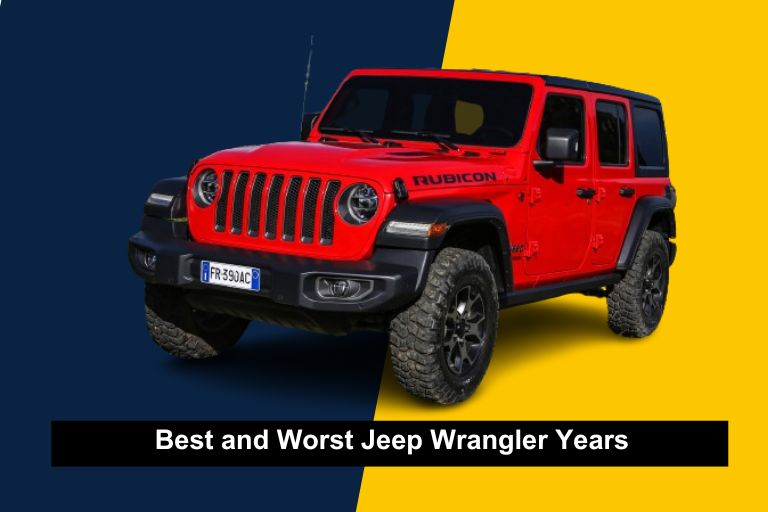The Best and worst Jeep Wrangler years, an iconic symbol of rugged adventure and off-road capability, has captured the hearts of enthusiasts worldwide since its inception in 1986. With a rich history spanning over three decades, each year of production brings with it a unique blend of features, improvements, and quirks that cater to different preferences and priorities.
In the world of Jeep Wranglers, some years stand out as shining examples of innovation and reliability, while others may leave enthusiasts scratching their heads in disappointment. Join us on a journey through the best and worst Jeep Wrangler years as we delve into the evolution of this beloved vehicle and uncover which models have earned their place at the top of the off-roading hierarchy.
If you’re a die-hard Wrangler fan or simply curious about the best year for Jeep Wrangler ownership, this article will provide valuable insights to help you navigate the vast terrain of options available in the market.
You can also read:- Best and Worst Toyota Camry Years
Best and worst Jeep Wrangler years of Generations
One of the most iconic and beloved off-road vehicles, the Jeep Wrangler has undergone several exciting transformations over its generations. From the classic CJ series to the modern JL models, each iteration brings its own unique charm and improvements.
Many enthusiasts argue that the best year for the Jeep Wrangler is subjective, with some praising the rugged simplicity of older models while others appreciate the advanced technology and comfort of newer versions.
Here’s an overview:
| Jeep Wrangler Generations | Years |
|---|---|
| 2nd generation (TJ) | 1997-2006 |
| 3rd generation (JK) | 2007-2017 |
| 4th generation (JL) | 2018-Present |
For those seeking nostalgia and a raw off-road experience, the YJ generation stands out with its square headlights and leaf spring suspension system. if you’re after a more refined ride without sacrificing capability, newer models like the JK or JL offer luxurious interiors and enhanced performance features.
Best, Neutral, and Worst Years of Jeep Wrangler
The 2006 Jeep Wrangler is often hailed as one of the best years for the iconic vehicle, thanks to its powerful engine options, sturdy frame, and classic design. This model year strikes a perfect balance between off-road capability and on-road comfort, making it a favorite among enthusiasts and daily drivers alike.
With reliable performance and ample customization options, the 2006 Wrangler continues to be sought after by those looking for a versatile and timeless ride.In contrast, the 2018 Jeep Wrangler received mixed reviews from fans due to its controversial redesign and departure from traditional styling elements.
While this model year introduced modern features and improved technology, some purists felt that it strayed too far from the rugged roots of the Wrangler brand. The 2018 Wrangler represents a shift towards mainstream appeal but may not resonate with die-hard fans who value heritage over innovation.
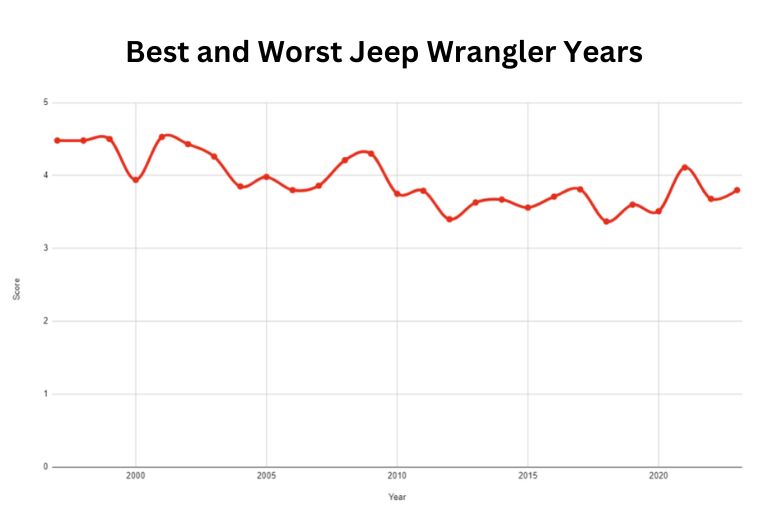
On the other end of the spectrum, many critics point to the 2012 Jeep Wrangler as one of the worst years in terms of reliability issues and mechanical problems. Owners reported issues with electrical systems, transmission failures, and overall build quality concerns that tarnished the reputation of this model year.
Despite its off-road prowess, the 2012 Wrangler struggled to deliver consistent performance and left many drivers disillusioned with their ownership experience.
Best and Worst Years for Jeep Wrangler 2nd Generation (1997-2006)
The best year for the Jeep Wrangler 2nd Generation, many enthusiasts point to the 2005 model. This year brought significant upgrades, including a more powerful engine option with the introduction of the 4.0L inline-six engine.
The improved fuel efficiency and reliability of this engine make the 2005 Wrangler a top choice for off-roading adventures.One of the least popular years for the Jeep Wrangler 2nd Generation is often considered to be the 1997 model.
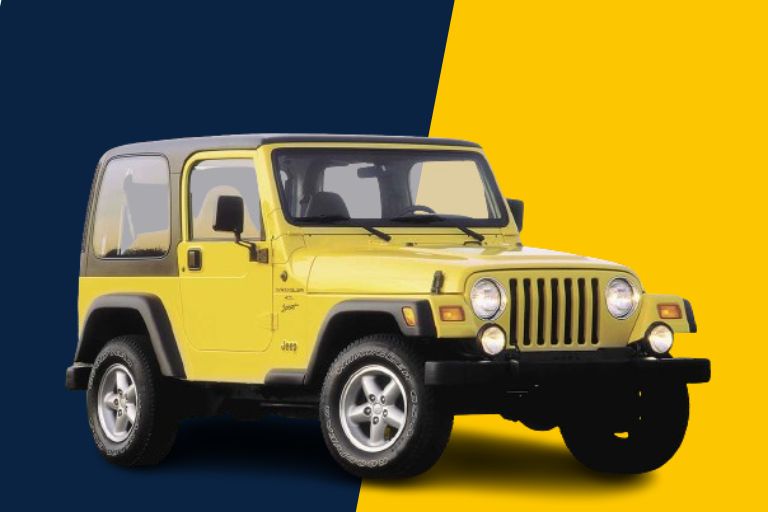
This year marked the transition from square headlights to round ones, which divided opinion among fans.some owners reported issues with reliability and mechanical problems with this particular model year.
Despite these drawbacks, dedicated Jeep enthusiasts still find ways to appreciate and modify their beloved 1997 Wranglers.
The Best Years: 1997, 1998, 1999, 2001
In the world of Jeep Wranglers, the late ’90s and early 2000s marked some of the best years for this iconic vehicle. The 1997 model year introduced the TJ generation, which brought back the round headlights that enthusiasts love. With improved suspension and updated engine options, the 1997 Wrangler set a new standard for off-road performance.
Moving into 1998, Jeep continued to refine the Wrangler with features like dual airbags and anti-lock brakes, making it more appealing to a wider range of drivers. This year also saw advancements in engine technology, enhancing both power and efficiency on rugged terrain.
As we stepped into 1999, Jeep further solidified its reputation for quality and durability with continued enhancements to the Wrangler’s design and performance capabilities. Overall, these years paved the way for modern-day Jeep Wranglers, showcasing innovation while staying true to its rugged roots.
The Neutral Years: 2002, 2003
During the Neutral Years of 2002 and 2003, Jeep Wrangler enthusiasts found themselves in a golden era of off-roading possibilities. These years brought forward an array of improvements in the beloved vehicle model, solidifying its reputation as a top contender in the rugged terrain arena.
The year 2002, specifically, stood out as a prime period for the evolution of the Jeep Wrangler, with enhancements to its engine power and interior comforts. This marked a turning point for Jeep aficionados who sought both performance and comfort in their off-road adventures.
In 2003, the Jeep Wrangler continued to soar in popularity as it maintained its status as one of the best options for off-road exploration. With advancements in technology and design aesthetics, the vehicle became an iconic choice for those seeking both style and substance on their outdoor escapades.
During these two pivotal years, Jeep Wrangler owners found themselves embracing a new level of versatility and durability that set this period apart as a memorable epoch for fans of this iconic vehicle model.
The Worst Years: 2000, 2004, 2005, 2006
The years 2000, 2004, 2005, and 2006 were particularly challenging for the automotive industry. All the chaos and struggles during those years, one shining beacon emerged for Jeep enthusiasts – the year 2006.
This was a game-changer for Jeep Wrangler lovers as it marked the release of the TJ Unlimited Rubicon model, which quickly gained popularity for its enhanced off-road capabilities and iconic design.
While 2004 and 2005 were marred by economic downturns and fluctuating market trends, Jeep managed to maintain its loyal fan base through continuous innovation and resilience.
The introduction of the Wrangler Unlimited in these years offered customers more space and comfort without compromising on the rugged appeal that defined Jeep vehicles. Despite the challenges faced during this period, Jeep’s commitment to quality engineering and customer satisfaction remained unwavering.
As we reflect on the turbulent years of 2000, 2004, 2005, and 2006, it becomes evident that adversity often paves the way for remarkable progress. For Jeep Wrangler enthusiasts looking back at this era, they can appreciate how these challenging times , led to significant advancements in off-road technology and design that continue to shape the brand’s legacy today.
In hindsight, these years serve as a reminder that even in the worst of times, there are silver linings waiting to be discovered – such as finding solace in hitting the road with a top-down Wrangler on a beautiful sunny day.
Best and Worst Years for Jeep Wrangler 3rd Generation (2007-2017)
The 3rd generation of the Jeep Wrangler, spanning from 2007 to 2017, offers enthusiasts a mix of both standout years and some that fall short. Among the top contenders is the 2012 Jeep Wrangler for its introduction of the Pentastar V6 engine, providing greater power and efficiency compared to previous models. This year also saw improvements in interior comfort and technology features, making it a fan favorite.
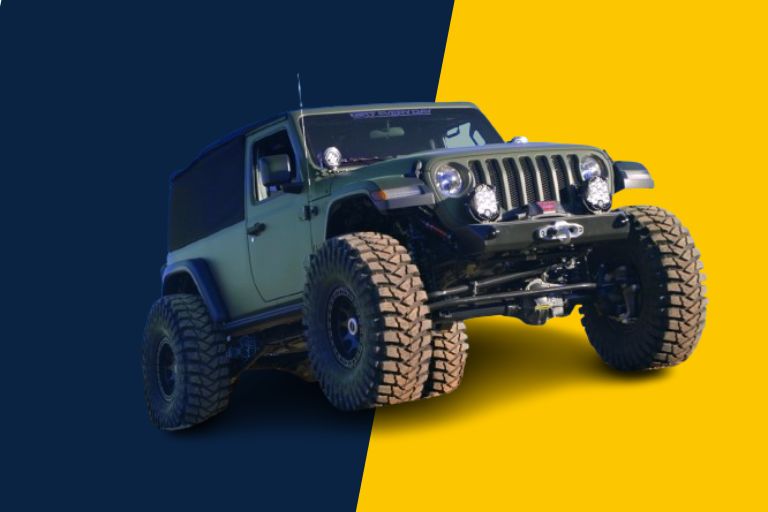
On the flip side, critics often point to the 2007 model as one of the weaker years for the Jeep Wrangler. Known for its mechanical issues and lackluster performance, this year failed to impress buyers looking for reliability and modern features.
The Best Years: 2008, 2009
In the automotive world, 2008 and 2009 were golden years for Jeep Wrangler enthusiasts. The release of the Wrangler Unlimited in 2007 set the stage for these iconic models to shine brighter than ever. With improved off-road capabilities and a more spacious interior, these vehicles became a favorite among adventure seekers.
The rugged design and dependable performance of the Jeep Wranglers in 2008 and 2009 solidified their reputation as top choices for off-roading enthusiasts. The inclusion of features like removable doors and roof options added versatility to these already versatile vehicles, making them even more appealing to those seeking freedom on rough terrains.
These model years stood out as a testament to Jeep’s commitment to innovation while staying true to its roots. For anyone looking to experience the thrill of outdoor exploration with a reliable companion, the Jeep Wranglers from 2008 and 2009 remain top contenders in their class, embodying the spirit of adventure, unlike any other vehicle on the market.
The Neutral Years: 2010, 2011, 2016, 2017
During the Neutral Years of 2010, 2011, 2016, and 2017, the Jeep Wrangler 3rd Generation remained a steadfast icon in the automotive industry. As trends came and went, this rugged powerhouse stood its ground as a symbol of adventure and durability. Despite these years being labeled as neutral, the Jeep Wrangler continued to capture hearts with its timeless design and off-road capabilities.
While other vehicles were caught up in flashy transformations and tech upgrades, the Jeep Wrangler stayed true to its roots with subtle yet impactful improvements. Its ability to blend nostalgia with modern convenience made it a versatile choice for both hardcore enthusiasts and casual drivers. The Neutral Years may have been marked by stagnation in some areas, but for Jeep enthusiasts, they were an affirmation of enduring quality and reliability.
The Worst Years: 2007, 2012, 2013, 2014, 2015
The years 2007, 2012, 2013, 2014, and 2015 were turbulent times for the Jeep Wrangler enthusiasts as the third generation faced various challenges. In 2007, concerns arose about the vehicle’s safety features and fuel efficiency amidst changing industry standards. Fast forward to 2012 and 2013, criticism mounted over design choices that seemed to deviate from the classic Wrangler aesthetic.
In 2014 and 2015, the Jeep Wrangler grappled with balancing innovation and tradition, facing backlash over attempts to modernize certain elements while preserving its rugged charm. These years marked a period of transition for the iconic vehicle as it navigated evolving consumer preferences and industry trends.
Despite the challenges encountered during these years, they served as crucial chapters in shaping the future of the Jeep Wrangler brand.
Best and Worst Years for Jeep Wrangler 4th Generation (2018-Present)
The 4th generation Jeep Wrangler, introduced in 2018, has been a mixed bag in terms of performance and reception. The year 2018 marked the debut of the JL model, bringing a modernized design and improved off-road capabilities compared to its predecessor.
It was also plagued by initial quality control issues, particularly with electrical components and transmission glitches. Despite these hiccups, the JL Wrangler garnered praise for its enhanced comfort features and new technology integration.
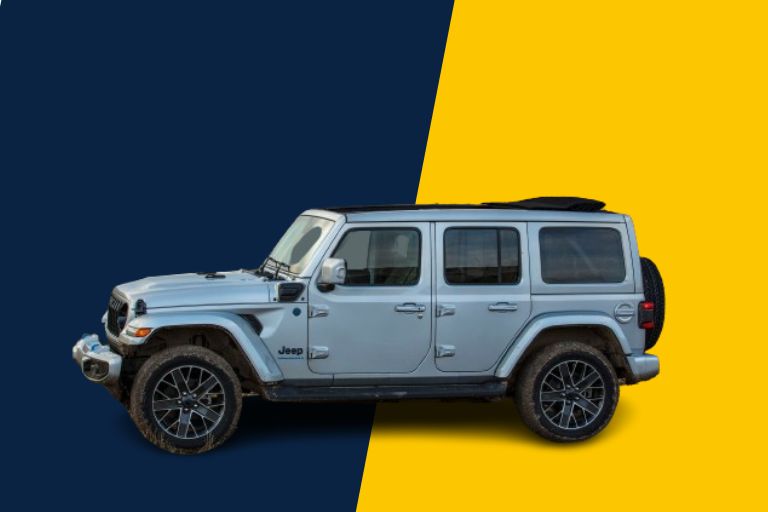
As we move into the present day with the Jeep Wrangler 4th generation, some argue that the year 2020 stands out as one of the best years for this iconic vehicle. With various trim level options and engine choices available, including a fuel-efficient mild-hybrid powertrain, Jeep enthusiasts have more customization opportunities than ever before.
Some critics point to limited cargo space as a downside for recent models such as 2021 versions. Nevertheless, with constant updates and improvements being made each year on this rugged SUV model, it’s clear that no matter when you choose to buy a Jeep Wrangler from this generation, you’re sure to experience an adventure-ready ride like no other.
The Best Years: 2021, 2023
The years 2021 and 2023 marked a significant milestone for Jeep enthusiasts with the introduction of the highly anticipated Jeep Wrangler 4th Generation. The rugged yet refined design, coupled with advanced technological features, set a new standard in off-road vehicles. Adventure seekers were enamored by the improved performance capabilities and enhanced driving experience offered by this iconic model.
In 2021, the unveiling of the Jeep Wrangler 4xe hybrid model brought forth a new era of eco-friendly exploration, showcasing how innovation meets sustainability in the realm of off-roading vehicles.
The fusion of electric power with traditional jeep ruggedness opened up avenues for environmentally conscious adventurers to push boundaries without compromising on performance or efficiency.
The Neutral Years: 2019, 2022
As the 2019 and 2022 years marked a period of stability and neutrality, the Jeep Wrangler 4th Generation emerged as a beacon of consistency amidst changing times. This iconic vehicle retained its rugged charm and off-road prowess, serving as a reliable companion for adventure enthusiasts across the globe.
During these neutral years, the automotive industry witnessed a gradual shift towards sustainability and eco-conscious practices. The Jeep Wrangler 4th Generation embraced this transition by introducing more fuel-efficient engine options and incorporating recyclable materials in its construction.
This commitment to environmental responsibility added a new dimension to the timeless allure of the Wrangler, appealing to a broader audience seeking both performance and eco-friendliness in their vehicles.
The Worst Years: 2018, 2020
The years 2018 and 2020 will forever be etched in our memories as some of the worst in recent history. Amid the chaos and uncertainty, one shining light for many car enthusiasts was the release of the Jeep Wrangler 4th Generation. With its rugged design and off-road capabilities, this vehicle symbolized resilience during tumultuous times.
As we reflect on these challenging years, it’s interesting to note how the popularity of the Jeep Wrangler surged despite economic downturns and global crises.
The allure of adventure and freedom that this iconic car represents seemed to resonate even more strongly when faced with adversity. It serves as a reminder that sometimes, in our darkest moments, we find solace in symbols of durability and strength like the Jeep Wrangler.
Despite the hardships that came with 2018 and 2020, there is a certain irony in how these years also brought about a renewed appreciation for simplicity and authenticity embodied by vehicles like the Jeep Wrangler.
In a world filled with uncertainties, sometimes all we need is a reliable companion on four wheels to navigate through rough terrains both literally and metaphorically.
Best and worst Jeep Wrangler years Average Resale Values
One of the best years for the Jeep Wrangler in terms of resale value is 2015. This year marked the introduction of the refined and powerful 3.6-liter Pentastar V6 engine, which significantly boosted performance and reliability.
The 2015 model also brought enhancements to interior comfort and technology, making it a sought-after option for buyers looking for a balance between off-road capabilities and daily usability.On the flip side, one of the worst years for Jeep Wrangler resale values is often considered to be 2007.

This year saw issues with engine reliability and poor fuel efficiency, leading to lower demand from buyers in the used car market. Despite its iconic status as a Wrangler model year, potential buyers are often wary of investing in a 2007 model due to these known shortcomings that can affect long-term ownership costs.
Conclusion
The Best and Worst Jeep Wrangler Years has seen its fair share of both great and not-so-great years. While some models have stood out for their reliability, off-road capabilities, and iconic design, others have faced criticism for various issues.
The best year for a Jeep Wrangler comes down to personal preference and individual needs. Whether you prefer a classic model or a newer one with modern features, there is a Wrangler out there for everyone. Make sure to thoroughly research and test-drive different years to find the one that best suits your lifestyle and adventure needs.
So, if you’re in the market for a Jeep Wrangler, take the time to explore all the options available before making your decision.
FAQ
Q. Which Jeep Wrangler model year is considered the best?
– The 2012 Jeep Wrangler is often considered one of the best years due to its reliability and off-road capabilities.
Q. What are some common issues with the 2007 Jeep Wrangler?
– Common issues with the 2007 Jeep Wrangler include engine problems, electrical issues, and suspension concerns.
Q. What makes the 2005 Jeep Wrangler stand out from other years?
– The 2005 Jeep Wrangler is known for its sturdy build quality and rugged performance, making it a popular choice among enthusiasts.
Q. How does the fuel efficiency of the 2016 Jeep Wrangler compare to other years?
– The fuel efficiency of the 2016 Jeep Wrangler is relatively low compared to newer models, averaging around 17-21 mpg.
Q. What are some key features of the 2020 Jeep Wrangler that make it a top pick?
– The 2020 Jeep Wrangler offers innovative technology options, improved interior comfort, and powerful engine choices that appeal to modern drivers.
.

